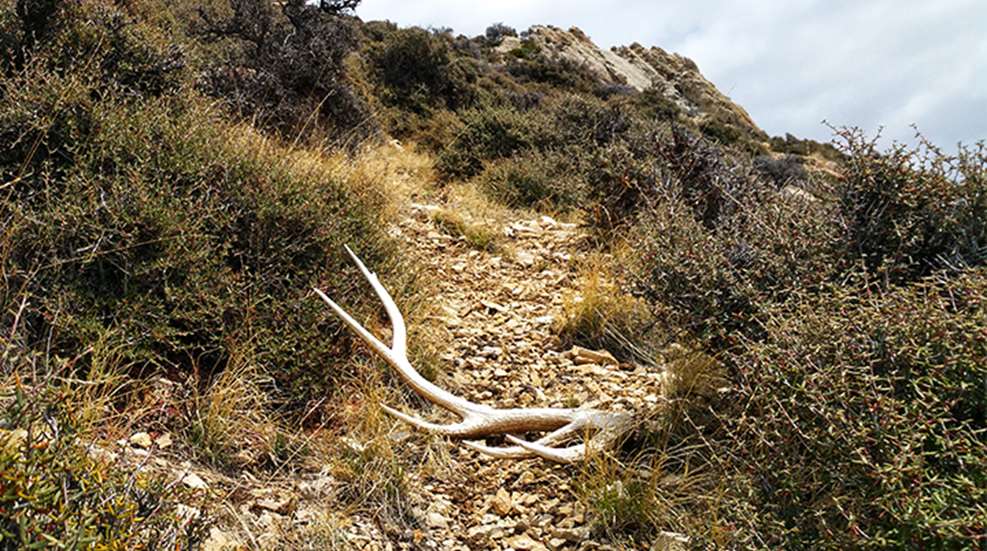
Reaching the elk wintering plateau at daybreak, I felt like Indiana Jones entering a cobweb-plagued pyramid chamber holding untold riches—antler riches, I hoped. After two hours of zigzagging back and forth on the open bench I was rewarded with a measly, weathered and chewed raghorn antler from yesteryear.
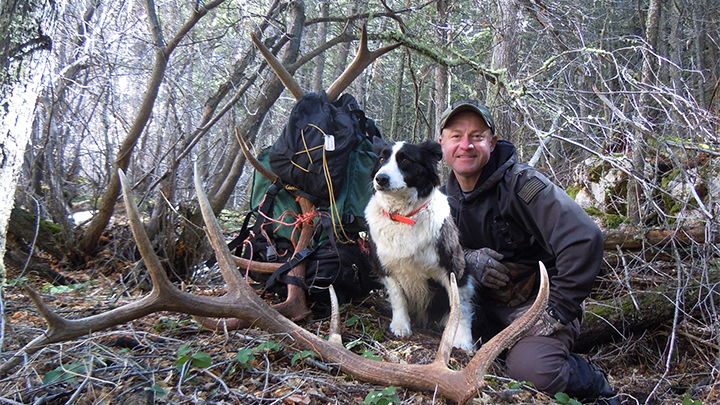
Boot prints told the story of others who beat me to the antler treasure chest. Three miles still separated me from the trailhead departure point with the option of a nearly 1,500-foot freefall through country that looked as gnarly as any photo of the Grand Canyon. I descended to redeem myself.
The Basics
Hunting for shed elk antlers has become almost as popular as hunting the tasty beasts themselves. The reasons are simple. Shed elk antlers rest in some of the most picturesque country in America. Most of them fall on public lands. And if you decide to sell the bone, you can make a fistful of dollars with several hefty horns (yes, I know they are antlers).
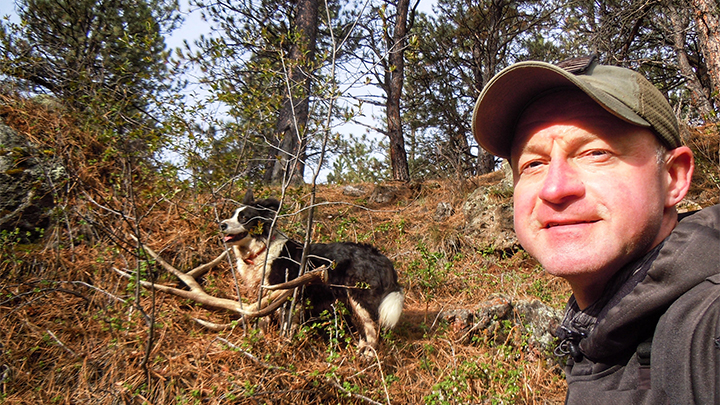
Before you pack the truck for an elk antler excursion, recognize these basics. First, equip yourself with a worthy binocular. You'll need to spring for at least a little bit of quality. You will be searching across basins, canyons and sagebrush flats. Elk antlers are big and their points glisten from afar. Next, make sure you wear sturdy, broken-in boots with a lugged sole. A hiking staff is a bonus—and leave the daypack at home. You will need a pack that can handle heavy, cumbersome loads. First aid, survival, navigation and communication should also fight for space in your pack. Mountain country is desolate and unforgiving during any month. Now, let’s find more elk antlers.
Saving Antlers From Squirrels
Squirrels have a partiality for elk antlers like any misplaced bone. Save those lost antler souls by scouring timber. Timber swaths and north-facing slopes separate grassy mesas, benches and meadows. Elk may stay all winter on one broad slope, but oftentimes they hopscotch between openings to evade predators and to find fresh grazing. In March and April, they jettison antlers on the grassy locations, but also in the timber in between. Elk even snowplow and pack trails from opening to opening. Follow these trails to rescue any dropped, now-timber-dwelling antler from a gnawing end.
The north slopes oftentimes represent bedding cover as well as acres beneath shrouded canopy. Elk routinely feed in the open, but return to these north slopes and bed in the timbered security. Again, follow the trails into the timber and look for telltale clues of bedding. They stand out in snow or the flattened ovals of forest duff. When you see fresh droppings, trails and beds, you are on the track to saving an antler from the jaws of a jittery squirrel.
Sheep Country Salvage
In addition to open plateaus, elk spend much of the winter on south-facing slopes—and they do not mind steepness. A variety of studies have been undertaken on the degree of slope they will endure, and for the most part, they dodge slopes greater than 45 degrees of steepness. My own observations, at least when elk are hungry, dispute those studies; you will witness firsthand how elk utilize terrain in your search area with each hike.
Although elk prefer not to lounge on steep, south slopes, they do feed on them. These locations tend to be bare of snow and offer fresh grazing overlooked in the green months. Plus, they provide excellent observation for danger below and fast escapes up or down depending on the predatory attack course.
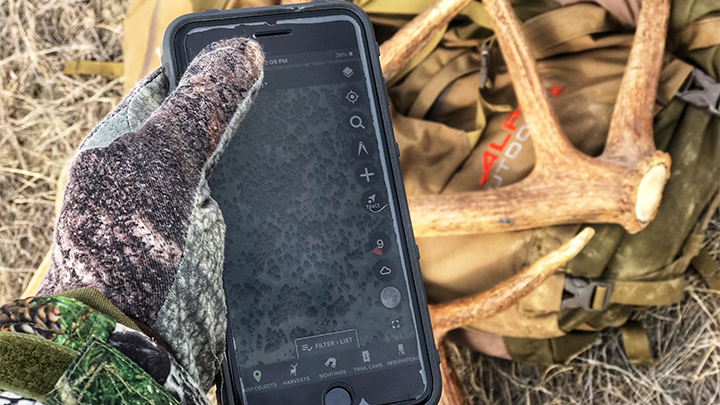
While hiking ultrasteep terrain, seek out any rocky outcroppings or benches elk can use for bedding or loitering. A hunting app, like the free HuntStand app, can play an important navigating role here. If bulls feel secure, they will bed in remote, steep canyons on ledges after nudging sheep from the cliffs (ha!). More than once while looking down from cliffs, I have spotted antlers lying in the wide open on a flat knob where you could not park a Prius.
It’s A Jungle In There
Elk country varies from the rainforest-like environments of the Northwest to the classic John Denver mountains and even the deserts of Western movie backdrops. Scattered across these settings are varying vegetative species that tower because of—and in despite of—their landscape. Depending on the species or location, elk may feed on the flora or pass through it to get from point A to B.
Tall sagebrush species, mountain mahogany, Gambel oak and a multitude of shrub communities stage throughout elk country. If snow levels exceed a foot in depth, these shrubs take on more importance for nutrition. Whether elk feed or travel through the taller vegetation, it pays to spend some time in the jungle looking for dropped antlers.
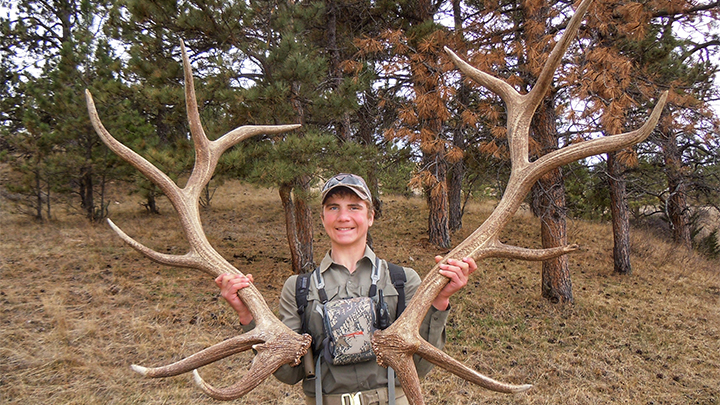
Like timber, scan for any obvious trails in and out of these bushy mazes. Set up a grid pattern and follow discernible trails. Next, go off grid and peek in between bushes where a long-necked bull might stretch for a nibble. On steep slopes, look for antlers to be tucked up under a clump after tumbling downhill and lodging underneath overhanging branches. I have dug many an antler from underneath shrubbery and even had to clip limbs to free tines from underbrush.
All this leads me back to my "redemption descent": It kicked off sluggishly, but it provided me with a scouting route through new country. I snatched two fresh antlers from a bedding area, but it was not until I hit the bottom and scrambled up the steep, south-facing slope that the detour began to pay off like a jingling slot machine.
Winding through a mix of junipers and mountain mahogany, I discovered a route elk had used regularly from a nearby grassland range. By the time I ascended to the next rim leading to the trailhead, I had my pack loaded with just enough antlers to forget about the morning dry spell.




































